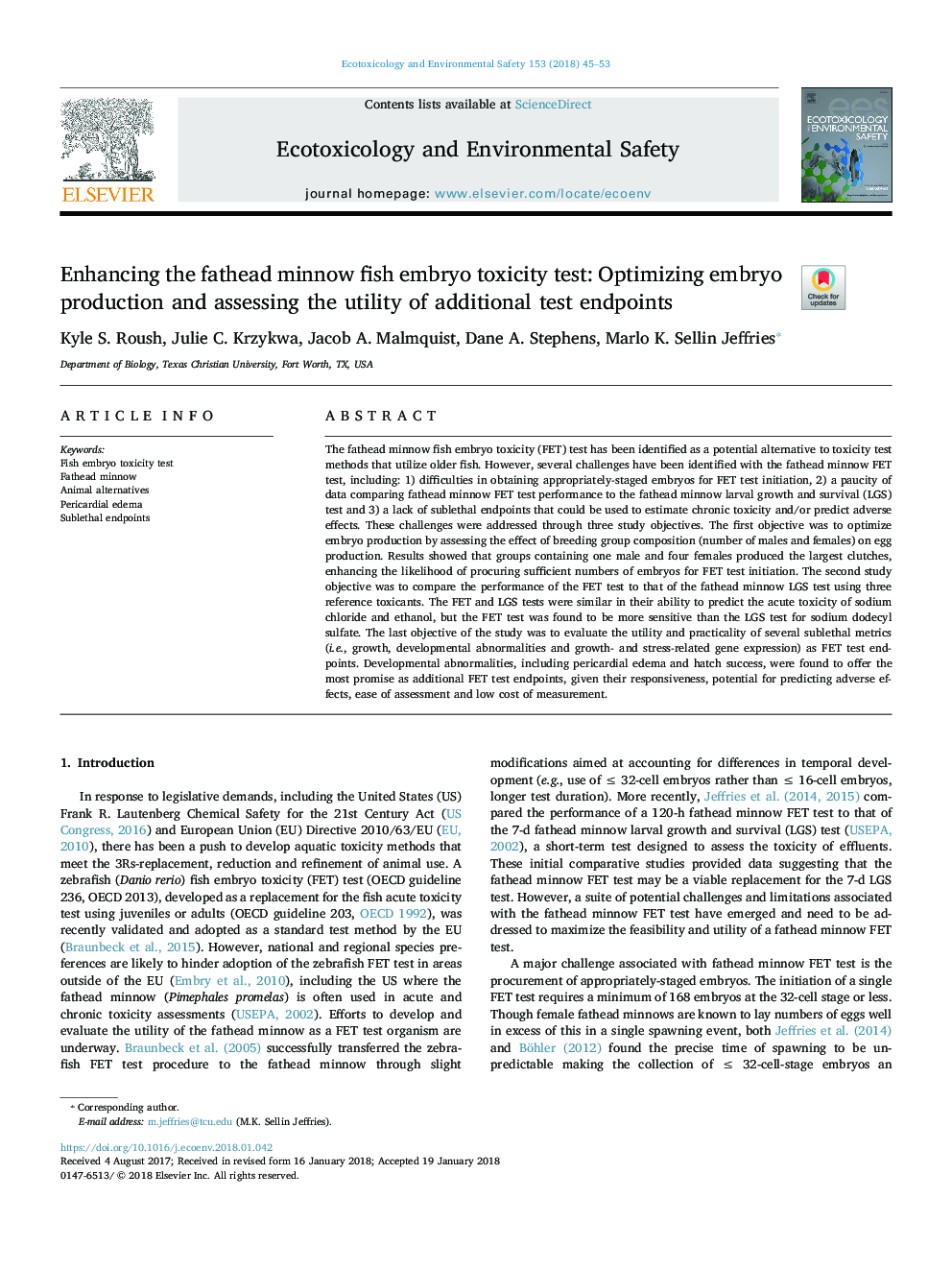| Article ID | Journal | Published Year | Pages | File Type |
|---|---|---|---|---|
| 8854173 | Ecotoxicology and Environmental Safety | 2018 | 9 Pages |
Abstract
The fathead minnow fish embryo toxicity (FET) test has been identified as a potential alternative to toxicity test methods that utilize older fish. However, several challenges have been identified with the fathead minnow FET test, including: 1) difficulties in obtaining appropriately-staged embryos for FET test initiation, 2) a paucity of data comparing fathead minnow FET test performance to the fathead minnow larval growth and survival (LGS) test and 3) a lack of sublethal endpoints that could be used to estimate chronic toxicity and/or predict adverse effects. These challenges were addressed through three study objectives. The first objective was to optimize embryo production by assessing the effect of breeding group composition (number of males and females) on egg production. Results showed that groups containing one male and four females produced the largest clutches, enhancing the likelihood of procuring sufficient numbers of embryos for FET test initiation. The second study objective was to compare the performance of the FET test to that of the fathead minnow LGS test using three reference toxicants. The FET and LGS tests were similar in their ability to predict the acute toxicity of sodium chloride and ethanol, but the FET test was found to be more sensitive than the LGS test for sodium dodecyl sulfate. The last objective of the study was to evaluate the utility and practicality of several sublethal metrics (i.e., growth, developmental abnormalities and growth- and stress-related gene expression) as FET test endpoints. Developmental abnormalities, including pericardial edema and hatch success, were found to offer the most promise as additional FET test endpoints, given their responsiveness, potential for predicting adverse effects, ease of assessment and low cost of measurement.
Keywords
Related Topics
Life Sciences
Environmental Science
Environmental Chemistry
Authors
Kyle S. Roush, Julie C. Krzykwa, Jacob A. Malmquist, Dane A. Stephens, Marlo K. Sellin Jeffries,
